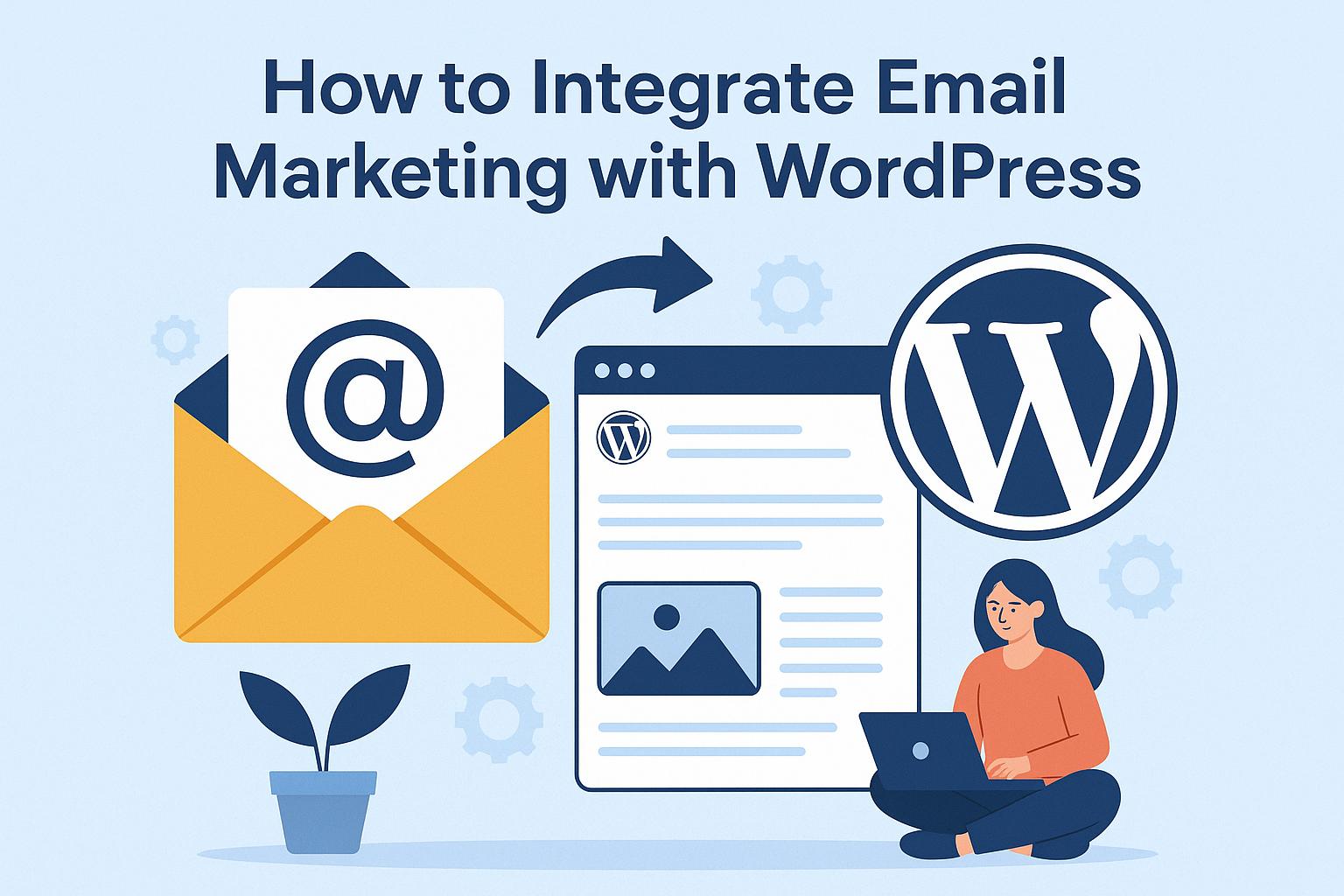Introduction
Integrating email marketing with a WordPress site is an effective strategy to enhance user engagement, grow your audience, and drive conversions. This integration leverages your website’s existing traffic and provides a structured approach to nurture relationships with your audience. This document outlines practical steps to accomplish this integration effectively.
Choosing an Email Marketing Service
The first crucial step in integrating email marketing with your WordPress site is selecting a suitable email marketing service provider. This choice should align with your business goals and consider the specific needs of your audience. Popular providers include Mailchimp, Constant Contact, and AWeber. When making your selection, ensure the chosen service offers a dedicated plugin for WordPress, which will streamline the integration process. Also, assess the features provided by the service, such as automation capabilities, analytics, customization options, and design templates. These tools can optimize your overall email marketing strategy, offering insights and functionalities that enhance your ability to engage subscribers effectively.
Installing the Email Marketing Plugin
After selecting an email marketing service provider, the next step involves installing the corresponding plugin on your WordPress site. This process is straightforward. Begin by navigating to the WordPress Plugins section on your site’s dashboard. Click on Add New and search for the plugin associated with your chosen service. Once you locate the plugin, click Install Now, followed by activating the plugin. Activation is a critical step as it enables the integration of various email marketing functionalities directly within your WordPress dashboard, offering you streamlined access to manage and track your campaign initiatives.
Configuring the Plugin
Once the plugin installation is complete, the next vital step is configuring the plugin settings aligned with your marketing needs. Typically, this entails connecting your WordPress site to the email marketing service by entering your service API key or connecting through an authorized account link. By accessing the plugin’s settings, you can customize a range of options including list management, form appearance, and advanced functionalities like automated follow-ups and user segmentation. These settings allow you to tailor your email marketing efforts to better resonate with your audience, ensuring relevance and enhancing engagement.
Adding a Subscription Form
A key aspect of integrating email marketing with WordPress is the addition of a subscription form to capture visitor email addresses. Subscription forms are vital tools in your email marketing strategy, and most plugins offer customizable forms that can be easily integrated into your site’s sidebar, footer, or utilized as pop-ups. When designing the form, ensure that it complements your website’s overall aesthetics and clearly conveys its purpose to motivate users to sign up. Offering an incentive, such as a free resource or discount, can significantly increase the form’s effectiveness by providing visitors with a compelling reason to subscribe.
Creating Lead Magnets
Developing lead magnets is an effective tactic to enhance your subscription rates. Lead magnets could be valuable resources such as eBooks, exclusive blog content, or special discounts that entice visitors to share their contact information with you. Use the email plugin to automate the delivery of these incentives once a visitor completes the subscription process, ensuring a seamless user experience. By integrating lead magnets into your email marketing strategy, you enhance the value proposition for subscribers, making it more likely for them to engage with your content and remain connected to your brand.
Sending Newsletters and Campaigns
With your integration setup complete, the next phase involves crafting and managing newsletters or email campaigns. Utilize the features of the email marketing plugin to create communications that are engaging, relevant to your target audience, and aligned with your brand message. Newsletters function as a bridge to deliver valuable content, announcements, and promotions to your subscribers, keeping them informed and connected with your offerings. Moreover, by monitoring the performance of these campaigns using analytics tools provided by your email service, you can track funnel metrics like open rates and click-through rates. These insights are invaluable for refining future campaigns, enabling continuous improvement in engagement strategies.
Conclusion
Integrating email marketing with WordPress enables bloggers and website owners to enhance engagement and build lasting relationships with their audience. By carefully selecting a service provider, configuring plugins optimally, and using strategic content delivery, your site can effectively convert existing traffic into a dedicated subscriber base, ultimately leading to increased conversions and revenue. The synergy between WordPress and email marketing can be a powerful tool when utilized effectively, making it essential for digital marketers to optimize this integration. For further details on plugin options and integration techniques, consult resources available directly from your chosen email marketing provider.
Through meticulous planning and execution of email marketing strategies, your WordPress site can not only grow its audience but also foster meaningful connections that translate into loyal customers. The comprehensive approach outlined here provides a pathway to leverage the full potential of email marketing integration, ensuring that your digital marketing efforts are both efficient and effective in an increasingly competitive online landscape.
